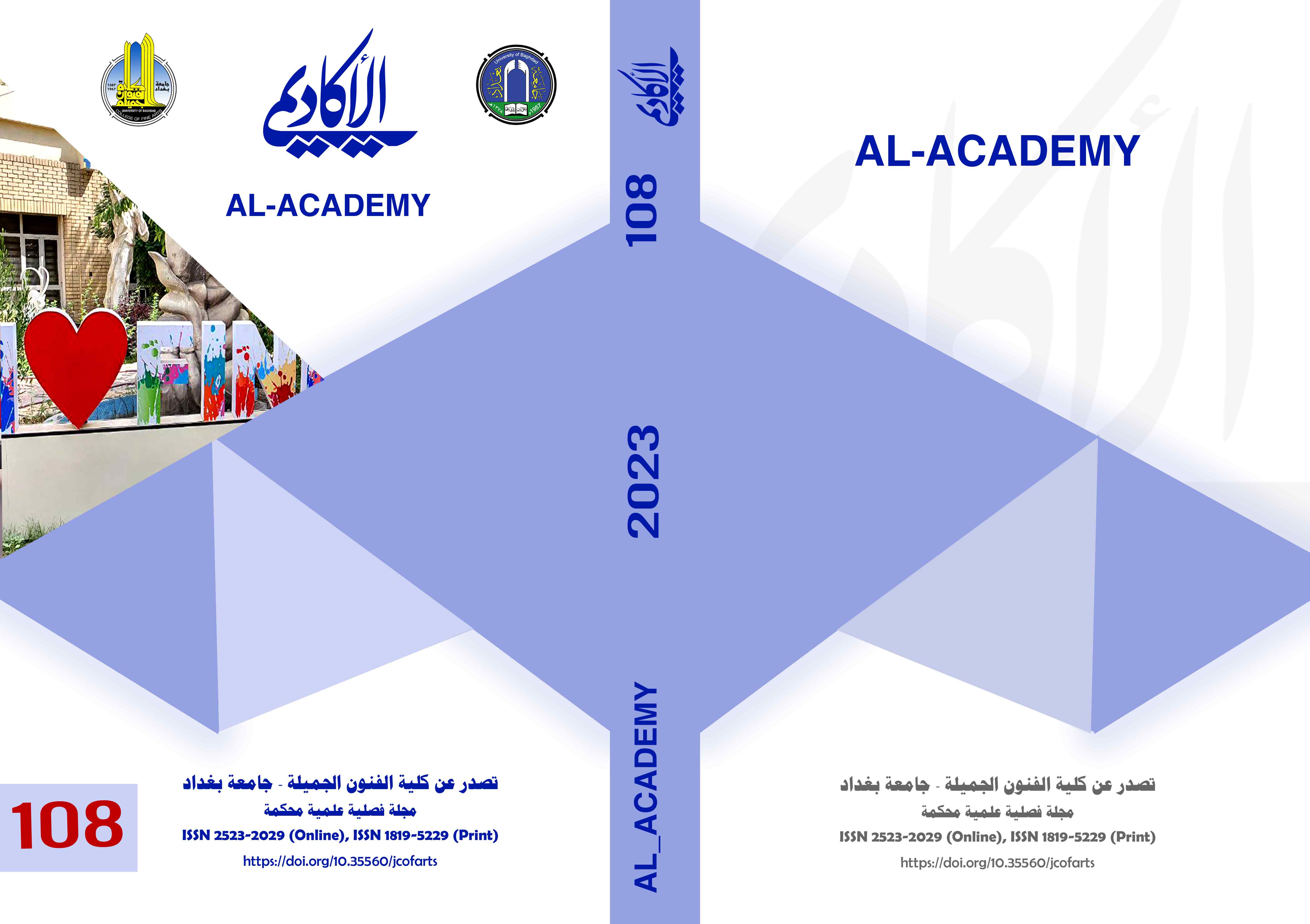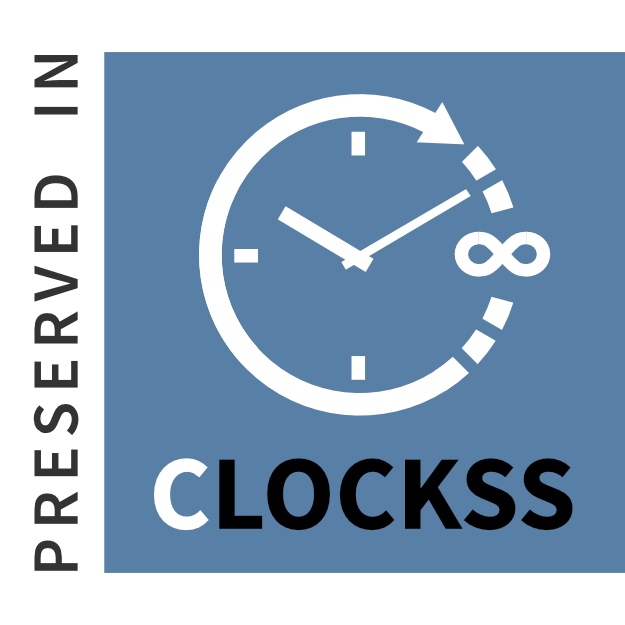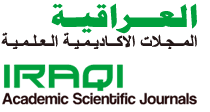The effectiveness of the harvesting strategy in the collection of environmental art by the Institute of Fine Arts students
DOI:
https://doi.org/10.35560/jcofarts108/21-44Keywords:
Harvesting Strategy - Serious Creativity - Environmental artAbstract
The current research aims to: (know the effectiveness of the harvesting strategy in the achievement of the students of the Institute of Fine Arts in environmental art.
- In order to know this effectiveness, the researcher put a main zero hypothesis and derived six sub-hypotheses from it. the usual way; As the research community reached (120) male and female students of the Fine Arts Institutes for the morning study in Baghdad. As for the research sample, it was chosen by the simple random method, and the number was (75) male and female students for the year 2021-2022 AD. The researcher applied a pre-knowledge test for the four groups of research to find out the level of previous experiences of students in the subject of environmental art. Teaching material vocabulary and objectives. After obtaining the validity and reliability of the test, the test was applied post-test on the four groups to see the effectiveness of the study plans according to the harvesting strategy.
Among the statistical methods used by the researcher: Kruskal-Wiles test for equivalence in precognitive achievement. Holsty equation to ensure the validity of the cognitive achievement test. Kauder Richardson (20) test for reliability of cognitive test. The discriminatory power equation to find the percentage of the number of respondents who answered correctly in the paragraph. Mann Whitney test to find differences between the two groups according to the sub-hypotheses.
- The results of the research showed that the students of the two experimental groups who studied environmental art according to the harvesting strategy excelled over the students of the two control groups who studied in the traditional way.
- The results also showed that there were statistically significant differences between the ranks of the students of both groups, the experimental males and the experimental females, and that the direction of this difference was in favor of the females of the experimental group who studied according to the harvest strategy.
Based on the results, the researcher concluded:
1. The harvesting strategy worked on transferring students from a state of direct reception of information to searching for it, and this is the opposite of the usual method.
2. The steps of the harvest strategy enabled the students to make qualitative changes in their thinking pattern, which helped them to distinguish the correct solutions and choose them from among many solutions.
The researcher recommends: presenting the educational material to the students in the form of problems that affect the life of the learner, and this encourages thinking and finding appropriate solutions to them.
References
Ibrahim, Khaled Kazem, Al-Kinani, and Nelly Awaid, (2011), Educational Studies, Center for Research and Studies, Ministry of Education, Volume 4, Year 4, Issue 16, Baghdad.
Ibrahim, Magdy Aziz, (2009), Creativity and the Development of Teaching and Learning, World of Books, Cairo.
Ibn Fares, (D.T), Dictionary of Language Measurements, investigation by Abd al-Salam Haroun, Dar Al-Fikr for Printing and Distribution, Part 1, Amman.
Abu Jado, Salih Muhammad Ali and Muhammad Bakrnofal, (2007), Teaching Thinking: Theory and Practice, Dar Al-Maysarah for Publishing, Distribution and Printing, 1st Edition, Amman.
Abu Jado, Salih Muhammad, and Muhammad Bakr Nofal (2010), Teaching Thinking Theory and Practice, Dar Al Masirah for Publishing, Distribution and Printing, 2nd Edition, Amman, Jordan.
Al-Alusi, Safa Lutfi, (2016), environmental art definition, its development, its elements and its importance, the methodological house for publication and distribution, 1st edition, Jordan.
Al-Basiouni, Mahmoud (1965) Artistic Culture and Education. Dar al-Ma'arif, Cairo, Egypt.
Al-Tamimi, Yassin Alwan and others, (2018), Dictionary of Psychological, Educational and Physical Sciences Terms, Dar Al-Radwan for Publishing and Distribution, 1st Edition, Amman, Jordan.
Hussein, Thaer Ghazi, (2008), the experience of the De Bono Center for Teaching Thinking, a paper presented to the Fourth Scientific Conference for the Gifted and Talented, the publications of the De Bono Center, Amman, Jordan.
Al-Khalidi, Adeeb Muhammad (2008): The Psychology of Individual Differences and Mental Superiority, Wael Publishing House, Iraq.
Al-Khatib, Abdullah, (2006), Civilization and the Crisis of Freedom, 1st edition, General Cultural Affairs House, Baghdad.
De Bono, Edward, (2005), Serious Creativity "Using the Power of Lateral Thinking to Create New Ideas", Arabicization by Basma Al-Nouri, Obeikan Library, 1st edition, Saudi Arabia.
De Bono, Edward, (2006), Tributaries of Lateral Thinking, Dar Al-Fikr for printing and publishing.
Al-Samarrai, Qusay Muhammad Latif, Al-Badri, Faida Yassin Taha, (2018), teaching skills and strategies, Al-Sadiq Cultural Foundation, 1st edition, Babylon, Iraq.
Al-Surour, Nadia Hayel, (2000), International Concepts and Programs in Education of the Distinguished and Talented, Dar Al-Fikr for Printing, Publishing and Distribution, Amman, Jordan.
Al-Shuwaili and others, (2016), creative teaching methods and skills, Dar Safaa for Publishing and Distribution, 1st Edition, Amman, Jordan.
Abdel Hamid, Shaker, (1987), The Beginning Process in the Art of Photography, Kuwait
Attia, Mohsen Ali, (2008), Modern Strategies in Effective Teaching, Dar Safaa for Publishing and Distribution, Amman.
Al-Ghurairy, Saadi Jassim Attia, (2007), teaching thinking, its concept and contemporary directions, Al-Mustafa Press, Baghdad.
Qatami, Youssef and Nayfeh Qatami, (2001), Teaching Thinking for the Basic Stage, Dar Al-Fikr for Printing and Publishing, 1st Edition, Amman, Jordan.
Mahmoud, Salah El-Din Arafa, (2006), Thinking Without Borders, The World of Books, Cairo.
Al-Yousifi, Ali Abbas, (2009), teaching and learning methods among students of the Faculty of Jurisprudence, submitted to the Ministry of Higher Education, University of Kufa, Teaching and University Education Development Center.
Cood ,T .L,( 1979)، Teacher Effectiveness in Elementary School, Journal of Teacher education, March, April.
De bono,Edward,(1992):Serious Creativity: using the power of lateral thinking to creative new idea. New York,NY,Harper collingPublishers, Inc
De Bono, Edward (1998) Lateral thinking concepts
De Bono, Edward (2007): Six thinking hats create britan: penguin books.
Ernest,R.H.(1962):Introduction to psychology.U.S.A. Harcourt brace word Inc.
Gronland, Norman E. (1965،( Measurement and Evolution in teaching 4thd. New York, Macsmillan Publishing Co. in,.
H. Osborne ( 1955)"Aesthetics and criticism", London, Routledge & kegan panl .
Jabbar Mohammed, H. (2022). Strategies of brain-based learning theory and its impact on the achievement of students of the Department of Art Education in Teaching Methods. Al-Academy, (106), 97–114. https://doi.org/10.35560/jcofarts106/97-114
AbdelWahed HASSAN, S. (2022). meta and its dimensions in the designed bio-formation - virtual reality environment - a model. Al-Academy, (105), 147–168. https://doi.org/10.35560/jcofarts105/147-168
ahmed Shallal, foad. (2022). The Graphic privacy in vector graphics design for children’s publications. Al-Academy, (103), 211–224. https://doi.org/10.35560/jcofarts103/211-224
tariq muhamad, mayida . . (2022). The Aesthetic Dimension in Popular Topics by Naguib Younes. Al-Academy, (103), 165–176. https://doi.org/10.35560/jcofarts103/165-176
Downloads
Published
Issue
Section
License
Copyright (c) 2023 Ikhlas Abdul Qadir Taher

This work is licensed under a Creative Commons Attribution 4.0 International License.













